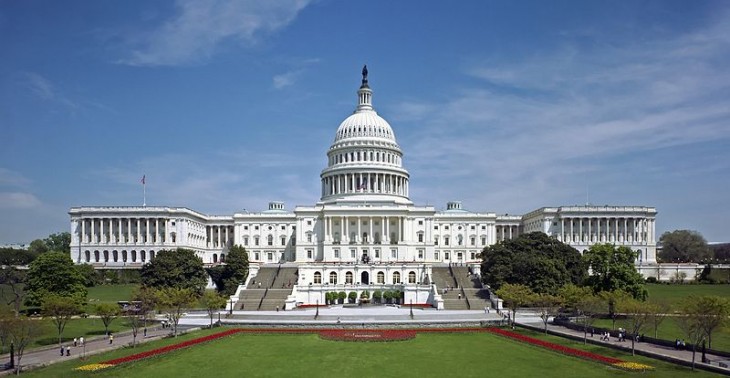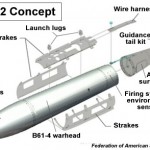
B61-12 Nuclear Bomb Goes to Capitol Hill
By Joshua Kyle Miller
On Wednesday, the B61-12 nuclear bomb made further headway on Capitol Hill at a hearing before the Strategic Forces subcommittee of the House Armed Services Committee.
The hearing centered around nuclear weapons modernization programs, focusing on the military, technical, and political requirements for the B61 life extension program and future stockpile strategy.
Madelyn Creedon, Assistant Secretary of Defense for Global Strategic Affairs for the Department of Defense gave the U.S. policy perspective at the hearing; General Robert Kehler, Commander of U.S. Strategic Command indicated the military requirements; Dr. Donald Cook, Deputy Administrator for Defense Programs at the National Nuclear Security Administration provided the enterprise-wide perspective; and Dr. Paul Hommert, Director of Sandia National Laboratories identified the technology and products necessary for implementation.
 The DOD, STRATCOM, and NNSA officials indicated, coinciding with the 2010 Nuclear Posture Review, that the B61-12 program would not provide additional military capabilities beyond consolidating the B61-3, B61-4, B61-7, and B61-10 gravity bombs. However, the guided tail kit that these officials advocate for will increase the accuracy of the new program in order to provide new fighting capabilities; subsequently increasing the role of nuclear weapons in spite of public proclamations of reducing their role.
The DOD, STRATCOM, and NNSA officials indicated, coinciding with the 2010 Nuclear Posture Review, that the B61-12 program would not provide additional military capabilities beyond consolidating the B61-3, B61-4, B61-7, and B61-10 gravity bombs. However, the guided tail kit that these officials advocate for will increase the accuracy of the new program in order to provide new fighting capabilities; subsequently increasing the role of nuclear weapons in spite of public proclamations of reducing their role.
Moreover, defense officials from Wednesday’s hearing also asserted that the B61-12 program would replace the B61-11 and the B83-1 gravity bombs of different payloads – indicating the B61-12 program would be able to cover the entire spectrum for targeting missions; gravity bombs with yields that range from the B61-4 (the lowest) to the B83-1 (the highest). The targeting options for the B61-12 program, which only a few years ago was originally deemed as a refurbishment program for B61’s, would be enhanced further through precision targeting and reduced nuclear fallout. What started out as a life extension program has instead evolved into an effort to enhance nuclear weapons capabilities – an unnecessary tactic in tackling 21st century threats.
The defense officials also hailed the B61-12 program as a means to reduce the nuclear weapons stockpile. Along with the consolidation factor the program touts, the military and labs have indicated that the B61-11 and B83 bombs could be retired with the versatility of the B61-12. The officials claimed that failing to implement the B61-12 program would inhibit the reduction of America’s inventory of gravity bombs because the B61-12 would reduce the stockpile of nuclear gravity bombs by “a factor of two,” according to the NNSA. What the officials failed to identify was the fact that only one-third of the stockpile is currently active, leaving the other two-thirds inactive or on the path to be retired regardless.
The NNSA has provided to Congress an estimate of approximately $8 billion over 12 years for the full program, with a $2.65 billion estimated total incremental cost. If history is to be our guide, then we should be skeptical of these projections, as defense acquisition processes more often than not cost more than projected.
Finally, what was missing at Wednesday’s hearing was a third party witness testimony. When an impartial perspective fails to be heard, it leaves a critical gap on an issue that is immensely costly and of little utility for the nation in both strategic and monetary terms – one we simply can’t afford in times of austerity.





